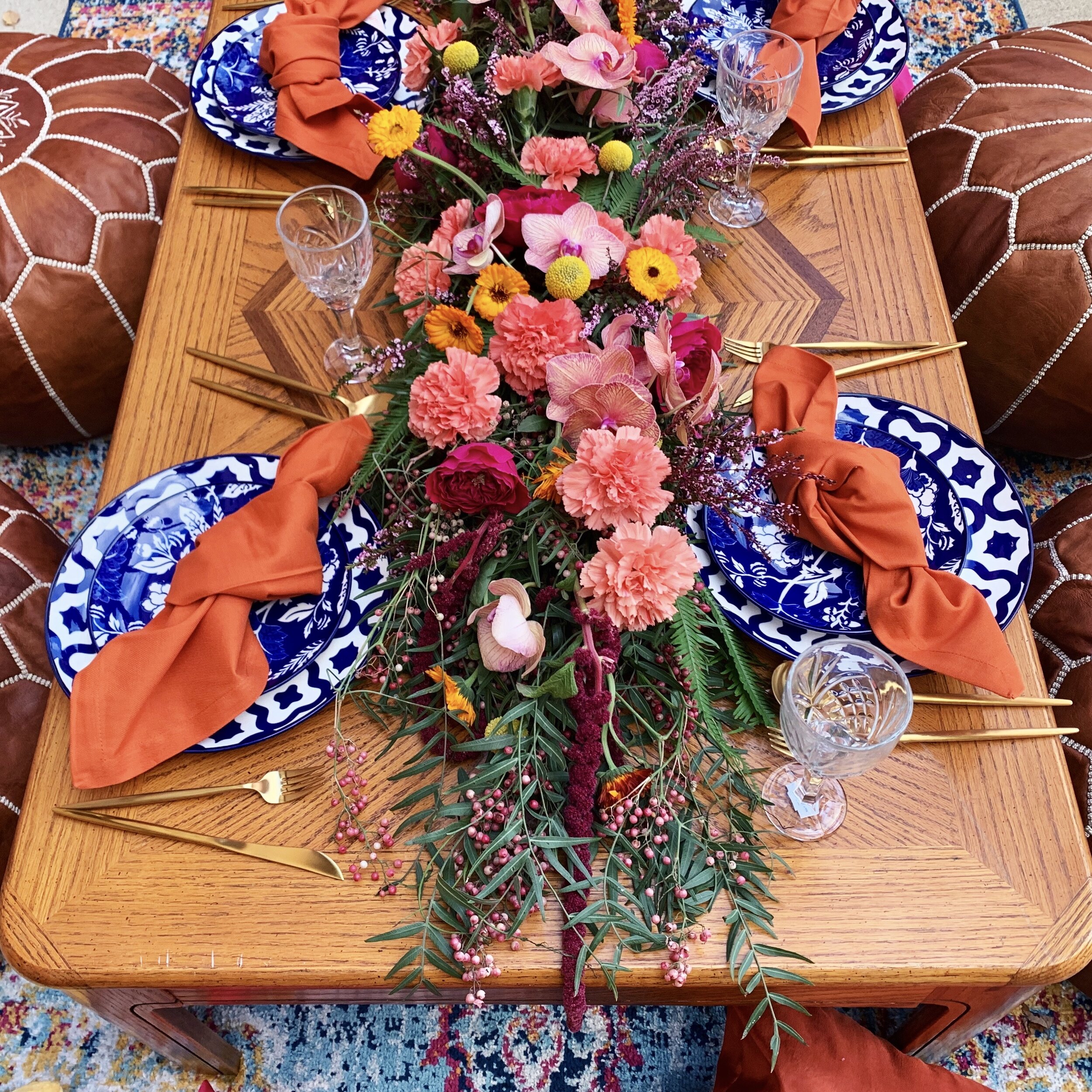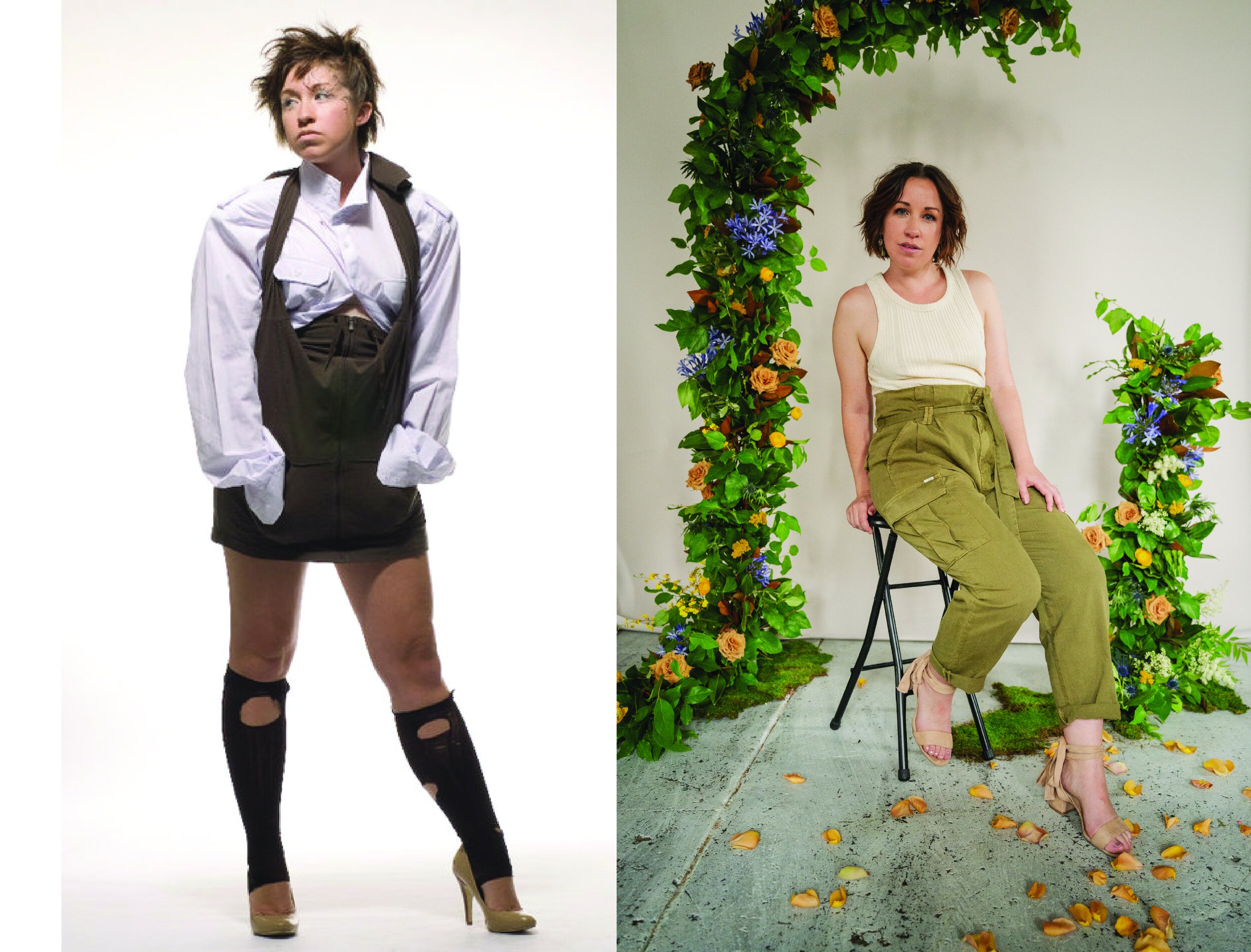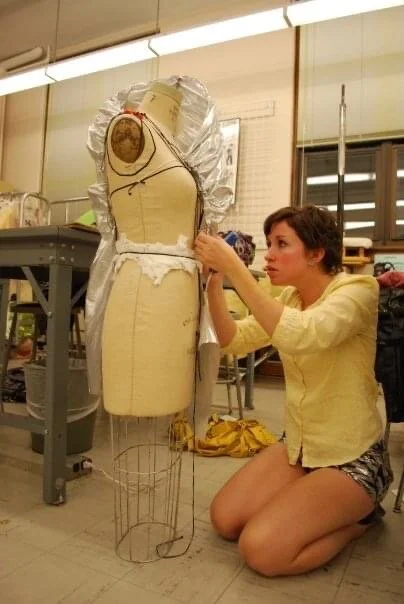Floral Foam Alternative
Follow my journey through my first attempt at a floral foam alternative, in the form of reusable “moss logs”.
As you may already know, if you’ve been following my journey in flowers, I am always looking for eco-friendly ways of arranging and creating. This dedication to being “eco chic” isn’t without its challenges though, a lot of times it means looking for out-of-the-box solutions for well established industry standards. For instance, a long time staple in the floral industry is that nasty green stuff called floral foam…
I call it nasty, because if you are a craft store junkie like me, inevitably you’ve run across floral foam before. Most of the time, the blocks are either already crumbling, leaving a fine green dust behind, or are laden with mystery fingerprints, like some sort of a floral crime scene.
At times it seems like there is literally nothing cute about traditional floral foam…
It makes a mess.
It is only good for one use (talk about throwing away money).
And it’s just a block of plastic with air bubbles, so it doesn’t break down in the dump after it’s been tossed.
Don’t get me wrong though, there are some pretty amazing benefits associated with floral foam as well, such as…
It provides a great, consistent water source, making it ideal for installations.
It is SUPER easy to arrange in… once you stick a stem in the foam, it isn’t going anywhere.
And it’s accessible - any floral wholesaler or craft store will have options available, so even if you’re in a pinch it’s an easy-to-access solution.
So when it comes to finding the right eco-friendly alternative for this long-standing industry staple, it’s not a small task…
What solution combines all of the great things about floral foam, while leaving out some of the nasty environmental impacts?
After researching and pulling together some tips and tricks I found, I decided to try my hand at what I lovingly call “moss logs” as a floral foam alternative. Just to be clear, I am not the first florist by any stretch of the imagination to use this technique, but I wanted to share my full process here so it’s all in one place. I had a hard time finding a comprehensive look at how to make a moss log, so I thought it would be worth sharing my journey here.
The first step in my moss log making process was identifying the correct type of moss and where to buy it. Luckily, I have a really knowledgeable contact at my local floral wholesaler, Colleen, who was able to help me to identify sphagnum moss as the best option for my end use. With this in mind, I went out and bought (what I thought was) sphagnum moss for my moss logs from my local home improvement store. As a word of caution, from my own personal blunder, sometimes sphagnum moss is intended to be used in conjunction with dirt to help with moisture retention. When this is the case, it will be too finely shredded for the moss log application…
Exhibit A (see image below) : the image on the left is finely shredded sphagnum moss to be used with soil, it’s basically dirt and isn’t suited for moss log creation; the image on the right is long, fibrous sphagnum moss and is ideal for moss logs.
A trip to my local nursery later, I finally had the correct kind of moss in hand and I was ready to get started.
On a side note, if you are looking for a steep discount on a gently used bag of finely shredded sphagnum moss, please send me a message ;-)
In order to create the moss logs, I used floral chicken wire and several pieces of 22 gauge florist wire. I placed the sphagnum moss on 1 layer of chicken wire, being sure to place enough that the log could hold its structure, but not too much as to make it difficult to insert the flower stems. Unfortunately, figuring out the right amount of moss to put inside of the chicken wire is not an exact science, but can be easily determined through some good old fashioned trial and error.
Once the moss was placed on the 1 layer of chicken wire, I used the 22 gauge wire to “sew” the 2 sides of the chicken wire together. I then tucked in the short ends of chicken wire on themselves to round out the end of the log and ensure that the moss was secure on all sides.
Once my moss logs were assembled, it was time to soak them with water. In order to ensure that my moss logs were evenly saturated with water, I decided to soak them in my bathtub. I filled my bathtub roughly half full with cool water and flower food. While my plumbing was not pleased, I was honestly impressed with how little debris came off of the logs once placed in water, as can be seen in the image below. Had the moss logs been smaller, I think that they could have been soaked in a bucket of water or sink, as opposed to a tub, but for my purposes I found the tub to be quite effective for ensuring even soaking.
After I was satisfied with the amount of saturation, I placed the logs in a plastic container to allow for any excess water to drain off prior to arranging.
The most exciting part about this step in the process is that you can really start to treat your moss logs the same way you would treat your floral foam. For instance, for the design pictured below, I ended up taping the moss log into a plastic tray and I was able to design into the log on that tray. The tray allowed for the easy transportation of my design and also caught any loose moss or displaced water, protecting the table the design was ultimately placed on.
(Look at how happy I am to be sporting such an eco friendly design!)
Since my other two moss logs were being used outside and I wasn’t concerned about catching any displaced water or moss, I was able to place these moss logs right on the ground. I placed one of the them at the base of my floating arch and the other on the opposite side of the floating arch. I was able to design into these moss logs on site and with most of the same ease as floral foam, though I did find better success using water picks for the weaker stemmed flowers (such as ranunculus and tulips).
Knowingly, I am still early on in my eco friendly floral journey, but I am excited about the results of my first “moss log” experiment. In addition to replicating the ease of floral foam without the environmental impact, I am currently drying out the moss to be used for future moss log endeavors, so my wallet is pretty happy too.
Eco friendly and eco chic, moss logs are a floral tool that this florist can get behind.
From Fashion to Flowers
From fitting clothing to crafting custom blooms, learn a little bit more about the face behind the flowers and my journey of going from a fashion designer to a floral artist.
You may not be familiar with my story, but my love for creating and design didn’t start with flowers.
From a young age, I was always very particular about what I wore (just ask my mom who had to search high and low for pink “gellies”, when they were the only kind of shoes that I would wear as a kid). This personality quirk of mine didn’t stop at clothing. I always had strong feelings about what color the walls in my bedroom should be painted and was enlisted at a young age to go furniture shopping with my mom. I was known for having very decisive “design” opinions and I never shied away from sharing them.
So when the time came to determine what I would study in college, you might be surprised to hear that I actually applied to be a dietitian… because if you want to be successful you have to be some kind of a doctor, right? Just to be clear, I have mad respect for anyone who puts in the work to become a doctor, but I personally wasn’t looking to become a doctor for the right reasons. I was always worried about being smart enough or accomplished enough growing up, so I was searching for something to give me that kind of validation. I was never the straight “A” student or homecoming queen type of person in high school, no matter how hard I tried, so I was determined to make the rest of my life different and that started with college.
With an acceptance letter in hand from Purdue University into the dietetics program, I went for a “day on campus” visit prior to starting my freshman year. As fate would have it, in the same college that housed dietetics there was also a program called “Apparel Design and Technology”. As I stood there with my dad, waiting for the balance of the future-dietitians to show up, I had this achey feeling in my gut…
I didn’t want to go with the future-dietitians, I wanted to find out more about this apparel design program.
Luckily my dad is a super supportive guy (and he was honestly just so happy that I was going to his alma mater), so we made the switch right then and there - we would spend my “day on campus” with the apparel design group instead of the dietetics group. That day was a game changer for me - for the first time in a long time I felt like I had found a group of like-minded people. We loved clothing, we embraced our own personal styles, and ultimately we loved creating - I was home.
I quickly came to realize that taking on an apparel design degree was so much more than just designing clothing. It required all-nighters of draping clothing on dress forms and putting the final pencil markings on my drawing class projects, followed by long days of fitting garments on models and taking accounting classes. The funny thing is though, that when you love what you do, it’s true that it never really feels like work.
Throughout my time at Purdue and in the Apparel Design program, I had finally learned to accept the creative side of me as the most powerful (and empowered) part of myself. It didn’t matter that I wasn’t a prom queen anymore, I was finally just me and that was enough.








After four years at Purdue, a study abroad adventure in London (which I’m certain I’ll share more about in a later post), and a successful (slightly over the top) senior collection, I was ready to pursue a career in the apparel industry. The apparel industry is notoriously difficult to get into though, especially with a paying job fresh out of college, so I was lucky enough to get a position at Abercrombie and Fitch corporate office as a technical designer.
Being a technical designer was definitely a departure in ways from my college education. Instead of focusing on all aspects of garment creation (inspiration —> to final product), I was now being asked to focus more on things such as ensuring the best possible fit, determining the correct construction, and communicating revisions to my vendor partners. While creativity was an aspect of my role at A&F, being a technical designer definitely tapped more into my analytical side.
In total I spent 9 years at A&F as a technical designer, working on a variety of different product categories during that time, from dresses to intimate apparel. I truly loved my job and the people I worked with and, in many ways, I feel that those 9 years were the years when I became an adult. Those 9 years forced me to come to terms with my own character flaws and helped me to establish coping mechanisms for dealing with stress and anxiety, while still executing at my highest caliber.
I didn’t realize it then, but this job was giving me the skillsets I needed to start my own business in flowers.
Even though I loved my job, the reality was that my creative side was begging me for more - more time and space to try to realize its full potential. I started to view arranging flowers as more than just a fun hobby that I did from time to time and instead as a potential career path. Arranging flowers had always been a little retreat for me from my everyday life. Post-college there would be days when I wanted to get crafty and create something for fun, but making a garment from nothing took hours or even days. Creating clothing as a hobby no longer melded with my demanding corporate schedule, but arranging a vase of flowers took mere minutes…
So I began to realize that while arranging flowers also demanded creativity, it was on a scale that I was able to offer at the time.
In order to go from a hobby florist to owning my own floral company, I sought out an education in floristry to teach me all of the techniques and tricks behind great floral design. I found that education in an online program, which at first I was wicked skeptical about - how can you teach someone design online? The great thing about my apparel background though, was that I already understood design. I knew what colors looked good together and which ones didn’t. Out of instinct, I could tell when something was great or maybe just a little bit off. So my online floral education was really to try to understand cut flowers and floral techniques better…
How do you keep flowers fresher for longer?
How do you manipulate flowers, while still keeping true to their natural form?
How do you create a classically wired cascading bouquet, Kate Middleton style?
The online course allowed me to build the confidence I needed to officially leave my corporate job of 9 years to pursue Blümen full time.
Even though the start of Blümen hasn’t been without it’s setbacks (I’m glaring at you, COVID), I have found that my creativity and apparel design background have shown up in ways that I could have never anticipated. This time and space at the beginning of my business has given me the opportunity to fine tune my flower design skills, expand my business to arrangement delivery, and has also allowed me to discover my love for wearable flowers.
So while the path from fashion to flowers has been in many ways an unexpected one, I truly feel that every step I’ve taken along the way has led me to becoming the kind of florist and designer I was always meant to be.




















